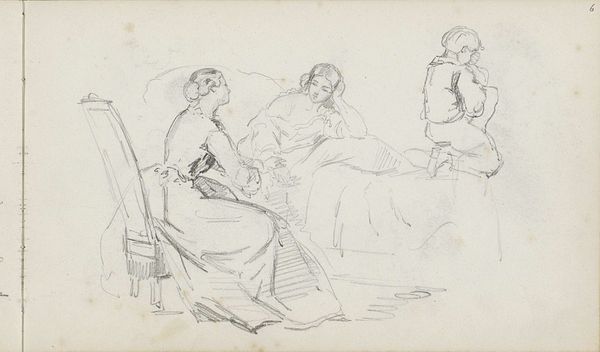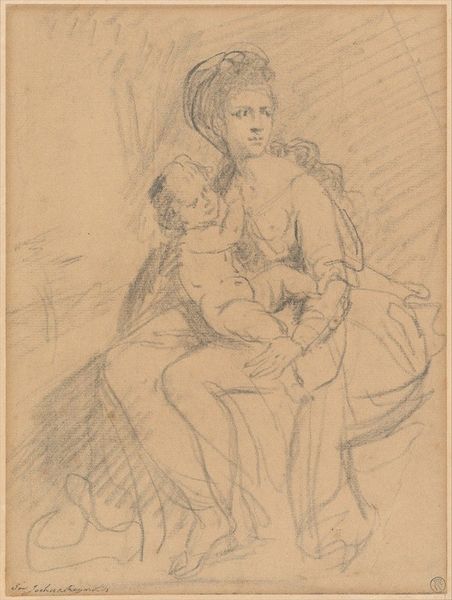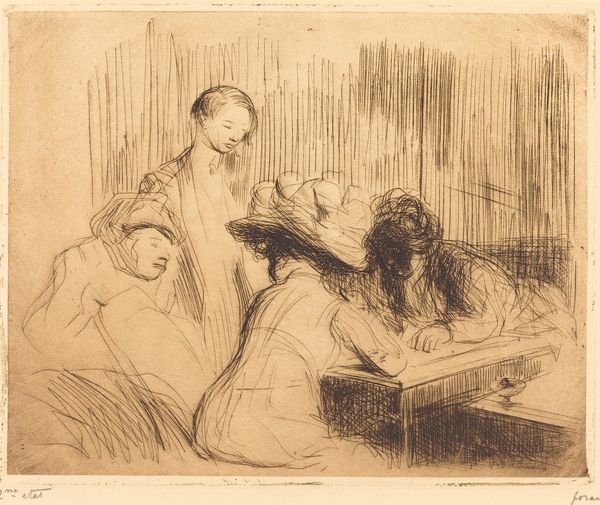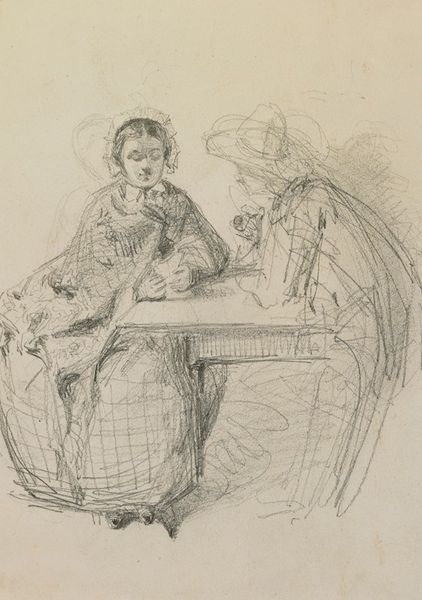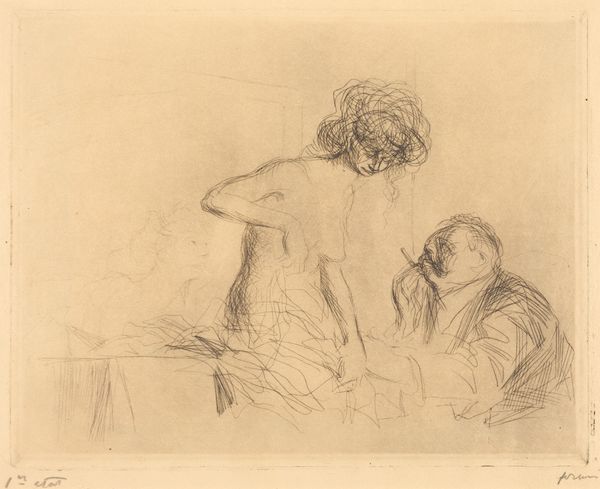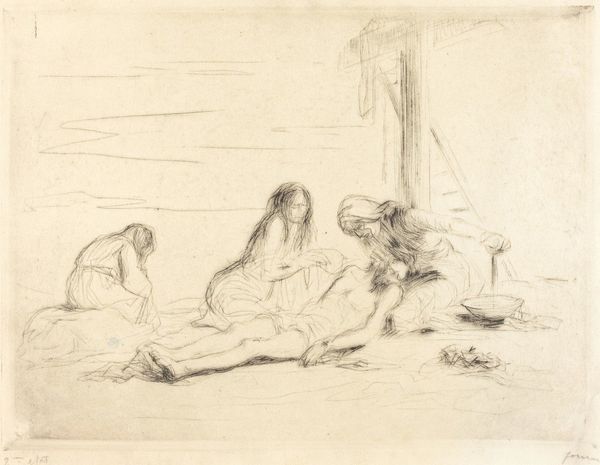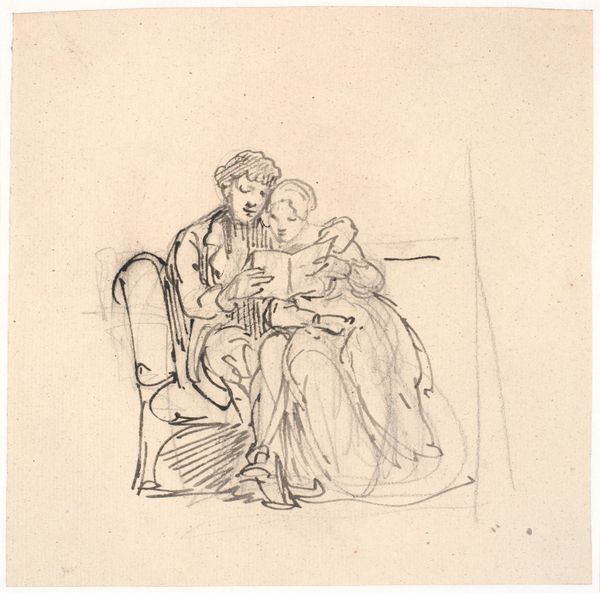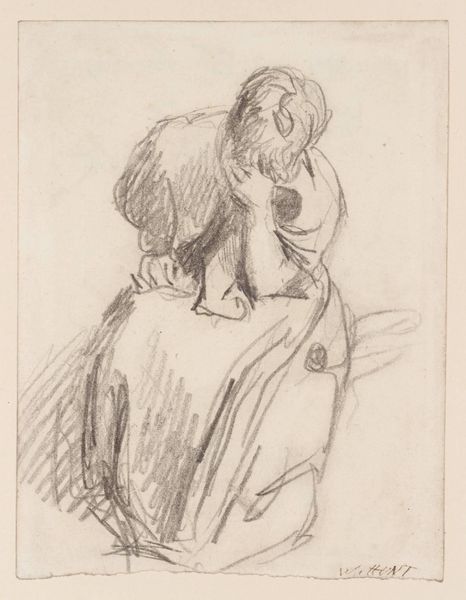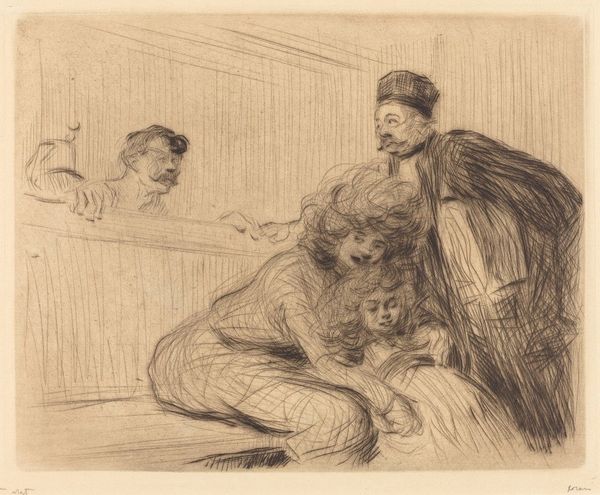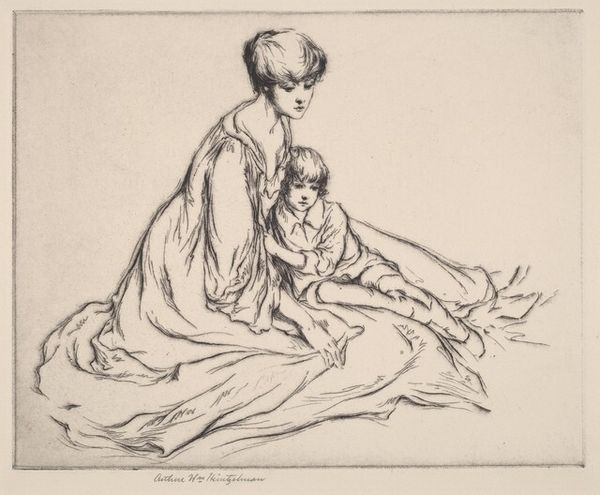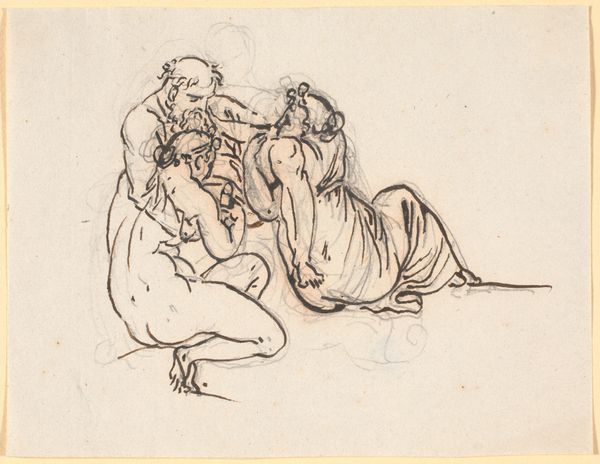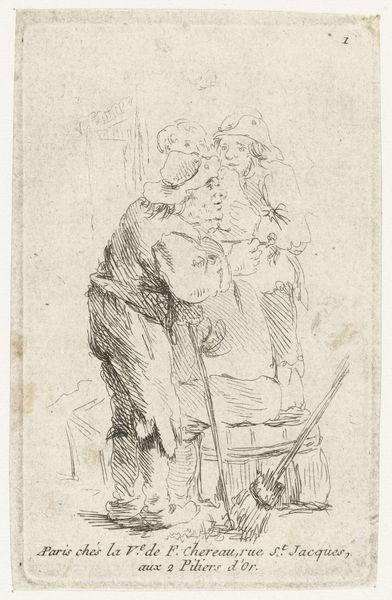
drawing, graphite
#
portrait
#
drawing
#
figuration
#
graphite
#
portrait drawing
#
pre-raphaelites
Copyright: Public Domain: Artvee
Curator: Looking at this graphite drawing from 1859, "Tennyson’s The Grandmother’s Apology – Figure Study", by Sir John Everett Millais, I’m immediately struck by the tenderness in this Pre-Raphaelite portrait study. What are your initial thoughts? Editor: It's all in the subtle play of light. The swift, nervous lines coalesce, barely suggesting form, yet conveying such texture. The contrast between the densely worked chair and the airy figure of the younger woman is truly striking. Curator: Indeed. This sketch served as a preparatory work, providing Millais an intimate moment with Tennyson’s poem before embarking on the illustrations published in the Moxon Tennyson edition. The figure of the grandmother, slumped in her chair, speaks volumes about the societal expectations placed on older women. Editor: Absolutely. The downward gaze and the posture – shoulders hunched, hands clasped – it's a masterclass in conveying a sense of resignation through the formal elements alone. There’s also a compositional choice I want to address – the young woman reading; her gesture acts as a foil. Is this meant to indicate contrasting states of the life course of women in this Victorian society? Curator: It seems that the inclusion of the younger figure could also be interpreted as an implied conversation— the elder sharing, the younger learning. The formal study captures the tension, the weight of time passed in her position in society and what it entails, but at the same time— a legacy. How these stories were meant to last. Editor: What strikes me most is the deliberate looseness of Millais's line. There’s a sense of incompleteness, of fleeting observation, that lends the scene an almost dreamlike quality. This is how memory, I think, actually feels. Curator: And the setting becomes as significant as the characters. Look at the shadow in the drawing, and how the room around them seems to be taking part in the telling, holding these roles in this society as they come to terms with change. It shows Millais not merely illustrating, but interpreting Tennyson’s commentary on a rapidly shifting social structure. Editor: It shows that beyond technique, composition is critical, because its forms act as vessels carrying narratives, ideas and historical and social concerns of Millais's world. Curator: Absolutely. Millais is inviting us to contemplate the human condition across different stages of life, through these two different figures in an age undergoing massive changes, especially for women. Editor: An insightful glimpse into Millais's process and a reminder of the power of formal analysis to uncover the hidden depths within even the simplest sketch.
Comments
No comments
Be the first to comment and join the conversation on the ultimate creative platform.
